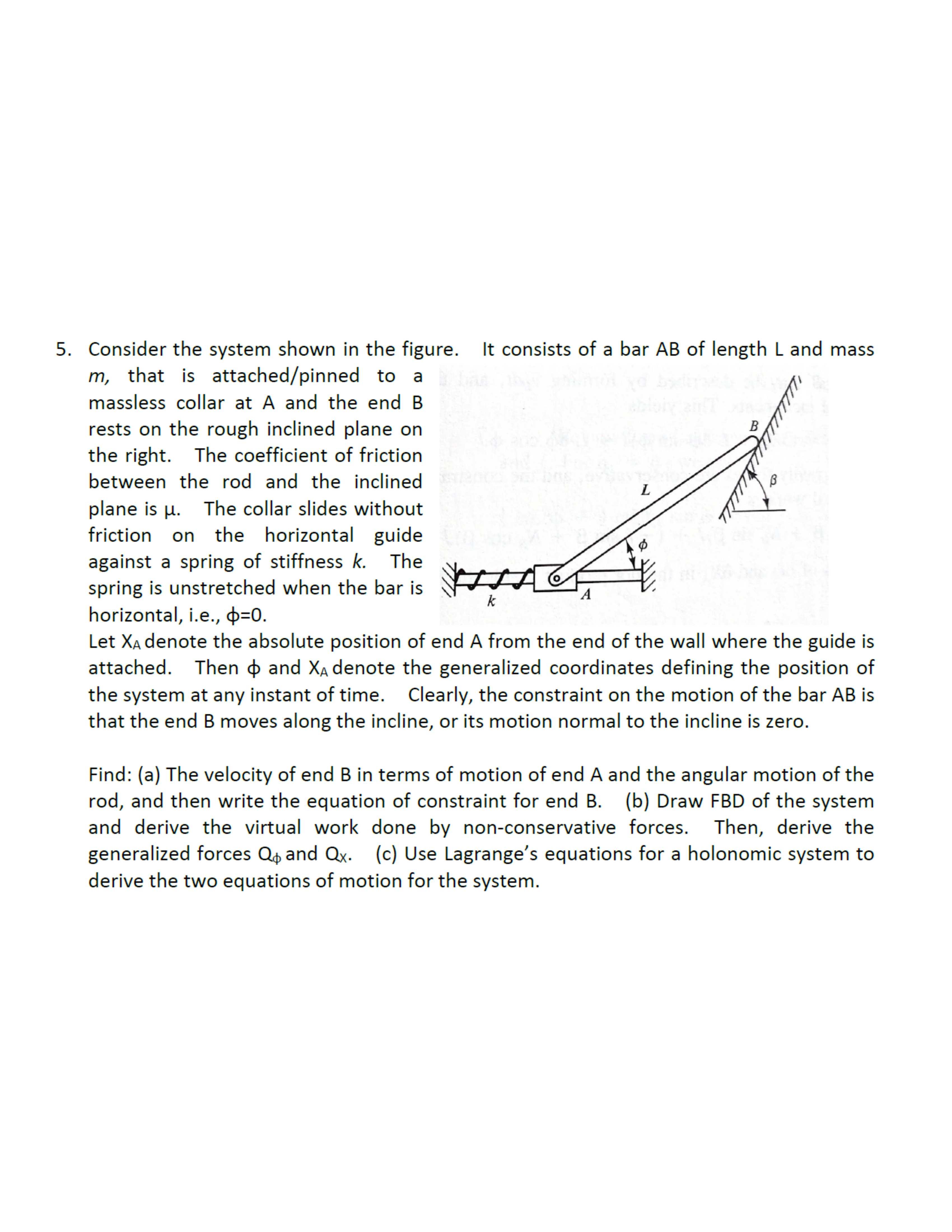Answered step by step
Verified Expert Solution
Question
1 Approved Answer
5. Consider the system shown in the figure. It consists of a bar AB of length L and mass m, that is attached/pinned to

5. Consider the system shown in the figure. It consists of a bar AB of length L and mass m, that is attached/pinned to a massless collar at A and the end B rests on the rough inclined plane on the right. The coefficient of friction between the rod and the inclined plane is . The collar slides without . friction on the horizontal guide against a spring of stiffness k. The spring is unstretched when the bar is horizontal, i.e., $=0. k A B L Let XA denote the absolute position of end A from the end of the wall where the guide is attached. Then & and X denote the generalized coordinates defining the position of the system at any instant of time. Clearly, the constraint on the motion of the bar AB is that the end B moves along the incline, or its motion normal to the incline is zero. Find: (a) The velocity of end B in terms of motion of end A and the angular motion of the rod, and then write the equation of constraint for end B. (b) Draw FBD of the system and derive the virtual work done by non-conservative forces. Then, derive the generalized forces Q4 and Qx. (c) Use Lagrange's equations for a holonomic system to derive the two equations of motion for the system.
Step by Step Solution
There are 3 Steps involved in it
Step: 1
To solve this problem we need to break it down into the following parts a Velocity of End B in Terms ...
Get Instant Access to Expert-Tailored Solutions
See step-by-step solutions with expert insights and AI powered tools for academic success
Step: 2

Step: 3

Document Format ( 2 attachments)
663d4375175ac_968675.pdf
180 KBs PDF File
663d4375175ac_968675.docx
120 KBs Word File
Ace Your Homework with AI
Get the answers you need in no time with our AI-driven, step-by-step assistance
Get Started


